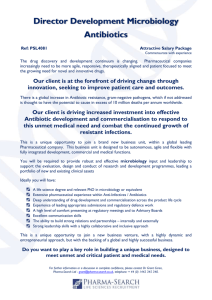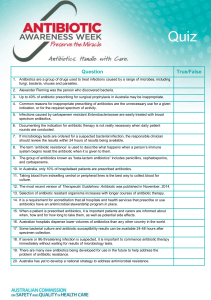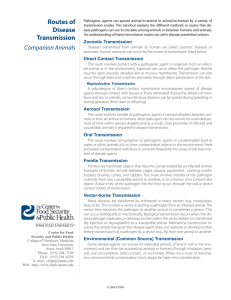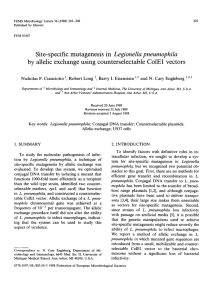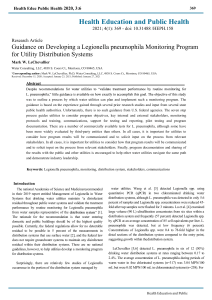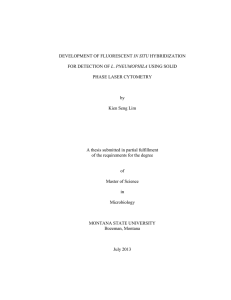BioSc321_2001_Exam_5
advertisement
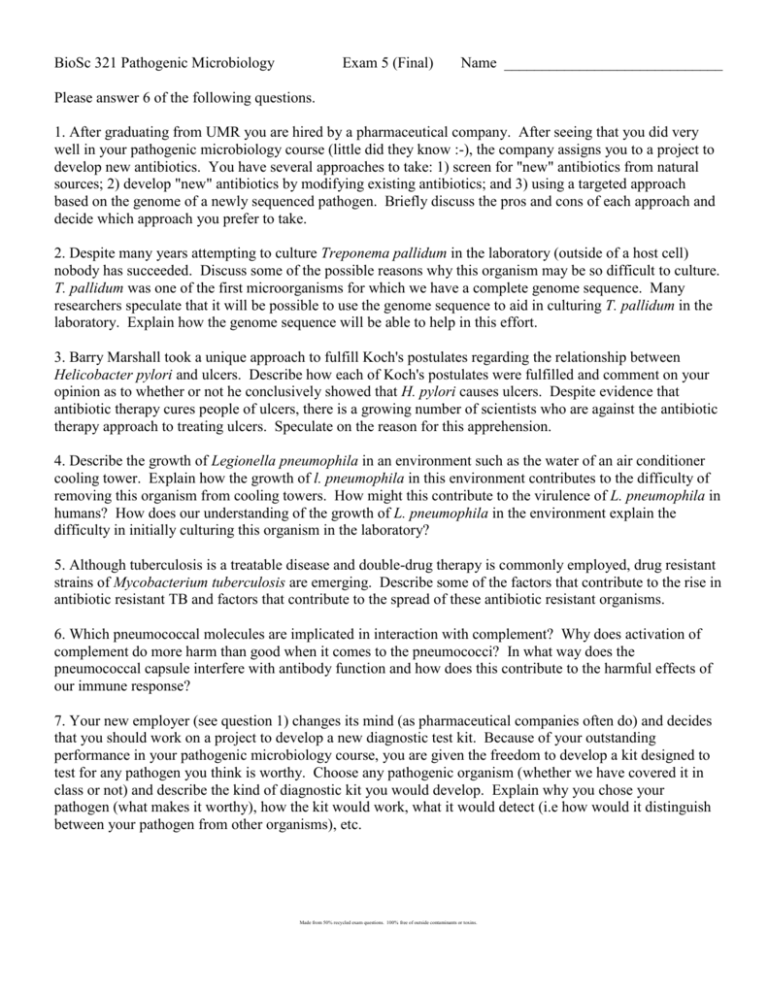
BioSc 321 Pathogenic Microbiology Exam 5 (Final) Name _____________________________ Please answer 6 of the following questions. 1. After graduating from UMR you are hired by a pharmaceutical company. After seeing that you did very well in your pathogenic microbiology course (little did they know :-), the company assigns you to a project to develop new antibiotics. You have several approaches to take: 1) screen for "new" antibiotics from natural sources; 2) develop "new" antibiotics by modifying existing antibiotics; and 3) using a targeted approach based on the genome of a newly sequenced pathogen. Briefly discuss the pros and cons of each approach and decide which approach you prefer to take. 2. Despite many years attempting to culture Treponema pallidum in the laboratory (outside of a host cell) nobody has succeeded. Discuss some of the possible reasons why this organism may be so difficult to culture. T. pallidum was one of the first microorganisms for which we have a complete genome sequence. Many researchers speculate that it will be possible to use the genome sequence to aid in culturing T. pallidum in the laboratory. Explain how the genome sequence will be able to help in this effort. 3. Barry Marshall took a unique approach to fulfill Koch's postulates regarding the relationship between Helicobacter pylori and ulcers. Describe how each of Koch's postulates were fulfilled and comment on your opinion as to whether or not he conclusively showed that H. pylori causes ulcers. Despite evidence that antibiotic therapy cures people of ulcers, there is a growing number of scientists who are against the antibiotic therapy approach to treating ulcers. Speculate on the reason for this apprehension. 4. Describe the growth of Legionella pneumophila in an environment such as the water of an air conditioner cooling tower. Explain how the growth of l. pneumophila in this environment contributes to the difficulty of removing this organism from cooling towers. How might this contribute to the virulence of L. pneumophila in humans? How does our understanding of the growth of L. pneumophila in the environment explain the difficulty in initially culturing this organism in the laboratory? 5. Although tuberculosis is a treatable disease and double-drug therapy is commonly employed, drug resistant strains of Mycobacterium tuberculosis are emerging. Describe some of the factors that contribute to the rise in antibiotic resistant TB and factors that contribute to the spread of these antibiotic resistant organisms. 6. Which pneumococcal molecules are implicated in interaction with complement? Why does activation of complement do more harm than good when it comes to the pneumococci? In what way does the pneumococcal capsule interfere with antibody function and how does this contribute to the harmful effects of our immune response? 7. Your new employer (see question 1) changes its mind (as pharmaceutical companies often do) and decides that you should work on a project to develop a new diagnostic test kit. Because of your outstanding performance in your pathogenic microbiology course, you are given the freedom to develop a kit designed to test for any pathogen you think is worthy. Choose any pathogenic organism (whether we have covered it in class or not) and describe the kind of diagnostic kit you would develop. Explain why you chose your pathogen (what makes it worthy), how the kit would work, what it would detect (i.e how would it distinguish between your pathogen from other organisms), etc. Made from 50% recycled exam questions. 100% free of outside contaminants or toxins.


